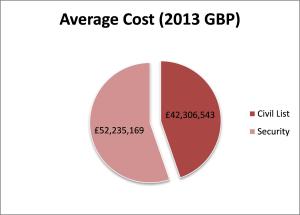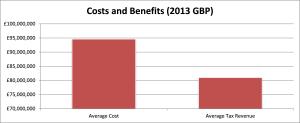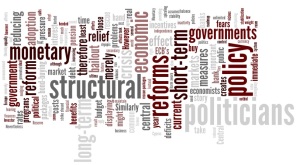 Last month, President Obama warned that “[w]hen wealth concentrates at the very top, it can inflate unstable bubbles that threaten the economy.” On August 10, he further cautioned that even in a slow-growth environment, we have to avoid the creation of “artificial bubbles.”
Last month, President Obama warned that “[w]hen wealth concentrates at the very top, it can inflate unstable bubbles that threaten the economy.” On August 10, he further cautioned that even in a slow-growth environment, we have to avoid the creation of “artificial bubbles.”
These warnings come after a prolonged period of historically low interest rates and the Federal Reserve’s unprecedented Quantitative Easing (QE) program. Although recent talk of tapering has sent bond yields up, the program has seen the central bank increase its balance sheet from $900 billion before the collapse of Lehman Brothers to $3.6 trillion. The S&P 500 index is chasing new highs and is up over 240% since its lowest point during the crisis, despite slow growth in the economy. Even Ben Bernanke hinted that low interest rates may incentivize risk-taking by financial institutions.
In this environment, fears about new bubbles are widespread. Some claim that—following an unhealthy pattern of artificial recoveries since the tech-bubble of the 1990s—the driving forces of the current recovery are again real estate and automobile sales. As these are mostly debt-financed, the argument goes, the recovery is fuelled by cheap credit and far from being structural. It is true that house prices have seen an impressive recovery, rising 15% year-on-year in June. Similarly, one can find a very high correlation between car sales and economy-wide growth figures. However, correlation does not imply causation. After 5 years of deleveraging, job uncertainty, and a significant reduction in net household wealth, it seems likely that buyers would postpone important investment decisions. The recovery in housing and automobile markets is therefore also a consequence of increased consumer confidence that results from an improved economic outlook, something that can be seen as a positive sign.
Others see bubbles in gold, investment in China, in emerging markets generally (though this risk might have been reduced after important capital outflows following the Fed’s announcement of tapering), treasuries, college tuition, and exchange-traded funds (ETFs). Another interesting example is the so-called “carbon bubble,” according to which oil-exploring firms do not factor in the possibility of government action on climate change, which could see two-thirds of fossil fuel reserves remain buried. Most convincing, along with Ben Bernanke’s concerns, is the argument that looks at the structural impact of central bank policy on the economy: while large corporations have access to cheap credit that boosts their profits and sends their share prices up; small firms cannot obtain loans at all, and sorely needed investment is postponed.
But does the current rise in stock prices really indicate a growing bubble? After the 2008 crisis, everyone can tell the tale: it all started with the housing bubble that turned into the subprime-mortgage crisis as loans turned sour. Because the financial sector was then forced to curtail lending, the global economy was pushed into a recession, which turned into a sovereign debt crisis in Europe as tax revenues declined and exposed structural imbalances that had been hidden by the bubble.
In hindsight, this is an easy story to tell, but people know little about what creates bubbles in the first place, and—more importantly—what drives investors to make such seemingly irrational decisions when, ex post, it is so easy to identify a “bubble”. As Harold L. Vogel writes, financial asset bubbles are broadly seen as inflations of price beyond what would be expected based on fundamental economic features alone. However, it is very difficult to identify what prices these fundamental features give rise to.
Economic research has produced many theories about the emergence of bubbles but so far, no model has been found to describe—or even predict—patterns of financial bubbles. Among the most debated issues are the assumptions of efficient markets and the rationality of actors. Although it might be rational for single investors to participate in bubbles when they expect others to remain in the market, Vogel rightly points out that the very idea of a bubble requires that there is a wave of irrationality that carries a majority of investment decisions in the excitement of the moment.
Several explanations for this irrationality have been investigated, and behavioral economics will have much to contribute to the debate over the coming decades. At the heart of the creation of a bubble seems to lay a tendency of humans to linearly extrapolate from past performance. Neurological research suggests that investors even override more cautious instincts to sell at times when they fear markets might crash. Furthermore, dynamic prospect theory posits that people change their very attitude to risks over time. The more they have already gained, the less risk-averse they become—implying a strong departure from rationality.
Overall, academic research suggests that a (limited) departure from the investor rationality and efficient markets hypothesis is warranted. Under conventional assumptions, statistical theory would suggest that daily market return amplitudes of 4% would only be observed once every 63 years (but it has been observed on several days in 2008). Clearly, markets do not always behave rationally.
The question that naturally follows is whether this is necessarily bad. Some claim that bubbles might actually spur much-needed technological investment that can drive future growth. Furthermore, bubbles might just be part of the economic cycle of boom and bust. After all, household wealth took a $5 trillion hit with the implosion of stocks in the 1990s, without causing anything like the current crisis.
But this does not square with the common narrative of the post-2008 financial crisis. Paul Krugman has argued that what makes this time different is the concentration of risk in the financial sector. The reason the burst of the bubble caused so much damage to the economy was that banks had to repair their balance sheets and therefore curtailed lending, which caused the economy to contract and the governments to bail out banks in order to prevent further damage. More worryingly, these bail-outs came with few strings attached, so that banks have no incentives to avoid similar behavior in the future.
Is this what we are witnessing right now? By historical standards, price-to-earnings ratios are normal, but some analysts claim that these are unsustainable because profits are held artificially high by low borrowing costs. While the profit-to-GDP ratio has historically been at 6%, it is currently at 10%, and Smithers & Company, a London-based market-research firm estimates stocks are overvalued by forty to fifty per cent compared to historic values. Counterarguments cite lower taxes, globalization (profit-to-GDP ratios are inadequate as companies make much of their profit abroad), and high unemployment (that allows companies to cut payrolls) as reasons for the relative surge in profits.
It comes in the nature of a bubble that it is quite difficult to realize when one is in it. Prolonged periods of low interest rates and QE certainly bear the danger of providing excess liquidity to financial speculators. With sluggish growth, investors are sitting on large piles of cash and seek returns, which can prepare an irrational environment prone to the development of bubbles. Although the stock markets are high, the money supply remains low, and there does not seem to be the same sense of euphoria that we have seen during earlier bubbles. Furthermore, one has to remember that central bank policies often follow a Taylor rule of monetary policy, which is highly dependent on economic performance—low interest rates therefore indicate, above all, bad economic performance. For the moment, the danger of a financial bubble does not seem to be imminent, but both the President and the Chairman of the Federal Reserve are right to keep an eye on financial markets as the economy gathers pace.
Posted by: Marvin Gouraud
Sources: Harold L. Vogel (2010) “Financial Market Bubbles and Crashes”, Bloomberg, U.S. Census, Financial Times, Forbes, Wired, Huffington Post, The New York Times, The Guardian, The New Yorker, NBC News, Leir Center for Bubble Research, The Telegraph, CNN Money, The Economist, IMF, Federal Reserve, NewsDay.com
Photo credit courtesy of Maricel Cruz (edited)
 The Program on America and the Global Economy and the Kauffman Foundation Present:
The Program on America and the Global Economy and the Kauffman Foundation Present:










